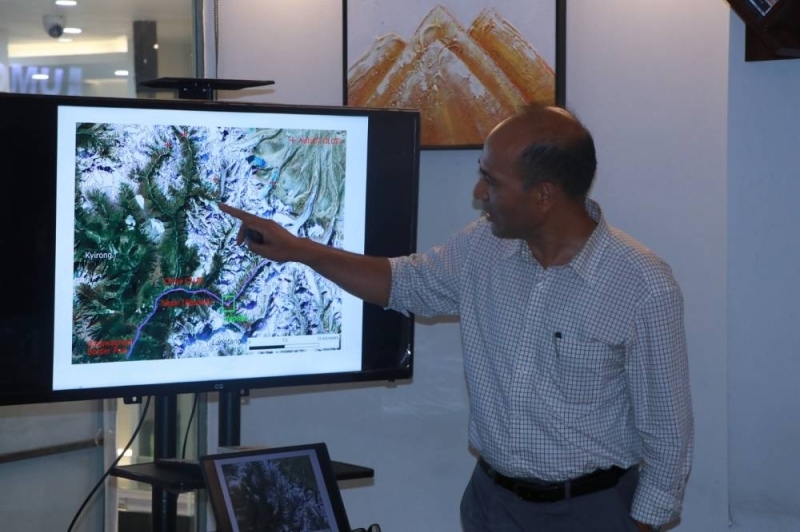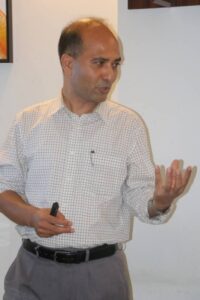
Rising heat, rising risks: Scientist warns of growing glacial flood threats in Nepal Himalayas
With rising global temperatures accelerating glacier melt, the threat of glacial lake outburst floods (GLOFs) is growing dangerously across Nepal’s Himalayas. This warning came during the eighth episode of the “Meet the Scientist” series, organized by the Nepal Forum of Science Journalists (NFSJ) on Tuesday under the theme “Rising Heat, Rising Glacial Floods in Nepal’s Himalayas.”
Speaking at the event, Prof. Dr. Rijan Bhakta Kayastha, Coordinator of the Himalayan Cryosphere, Climate, and Disaster Research Center (HICCDRC) at Kathmandu University, highlighted the urgent risks posed by GLOFs, especially in transboundary regions like Rasuwa.

He presented findings from a Rapid Hazard Assessment Report on the Rasuwa Glacial Flood that occurred on July 8, 2025. The flood originated from a supraglacial lake at the Purepu Glacier, located in the Lendhe Catchment of Bhote Koshi, within Chinese territory but flowing toward Nepal. “The flood was first reported around 3:15 am local time and was caused by a sudden outburst of a glacial lake at an elevation of 5,160 meters,” Dr. Kayastha informed, citing imagery from Sentinel-2 satellite data covering June 2024 to July 2025.
Explaining the hydrologic system of a glacier, he noted the roles of supraglacial, englacial, and subglacial drainage systems in managing water flow within glaciers. However, with rising temperatures, many glacial lakes-like the Tsho Rolpa Glacial Lake in Dolakha-are expanding at an alarming rate. “If we don’t act in time, these lakes could turn into ticking time bombs for downstream communities,” warned Dr. Kayastha.
Participants including science journalists, researchers, and students expressed concern over the increasing frequency and intensity of glacial floods. They raised questions about how communities can be better prepared, and what preventive measures should be adopted by local and national authorities.
Chhatra Karki, Vice President of the World Federation of Science Journalists (WFSJ), appreciated the in-depth insights provided by Dr. Kayastha. “This kind of scientific engagement is essential for journalists to report accurately on complex climate issues affecting the Himalayas. The session helped us understand that these disasters are not random; they are rooted in science, and we must base our policies on sound research,” Karki said.
The “Meet the Scientist” program, hosted monthly by NFSJ, aims to bridge the gap between scientists, policymakers, and the general public through science journalism. By inviting experts and facilitating open dialogue, the series encourages evidence-based understanding and communication of critical environmental issues.
As Nepal continues to face climate-induced challenges, such platforms serve as important tools for early warning, policy input, and public awareness. “We need more informed reporting and preparedness at the local level,” concluded Dr. Kayastha. “Science must lead the way in protecting our fragile mountain ecosystems and the lives that depend on them.”